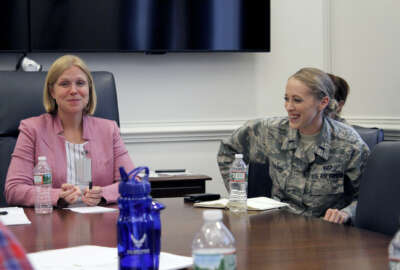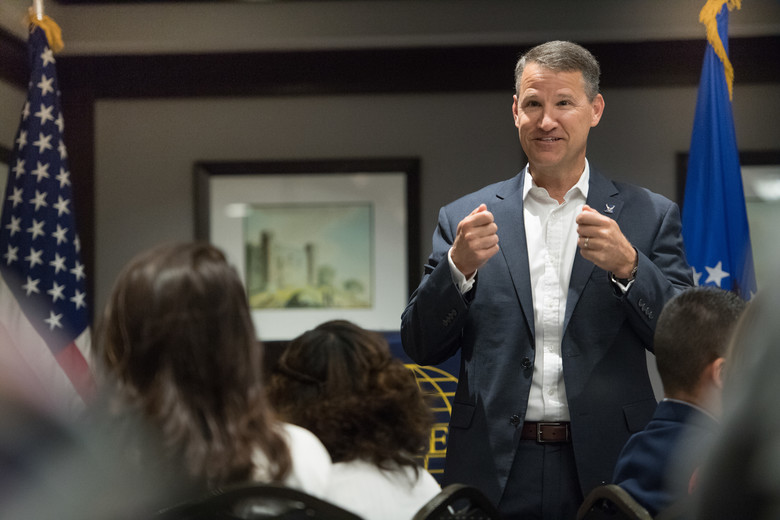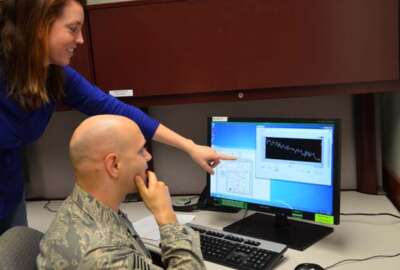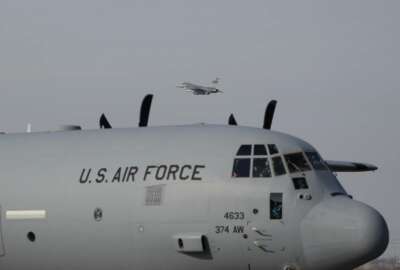
Air Force testing next generation help desk with 70K users as part of EITaaS
Bill Marion, the Air Force’s chief information officer, said through one of the enterprise IT-as-a-service pilot programs, the service is reimagining help desk...
As the Air Force rolls out its proof of concept under the enterprise IT-as-a-service, one of the first pieces to go live is something as basic as a modernized help desk.
It’s one of several efforts underway, including next generational networking and infrastructure, cloud services and data architecture, that will create this digital Air Force of the future.
Bill Marion, the Air Force’s chief information officer, said the help desk initiative went live recently and it kicked off a busy 2020 for the enterprise IT-as-a-service (EITaaS) initiative. Marion confirmed to Federal News Network that he will be leaving federal service after 28 years in government. He will be heading back to Texas and working in the private sector.
“That was really about reimagining how we do help desk services. If you think about Genius Bars with Apple, how do you build that next generation of service desk that is artificial intelligence-enabled, tier zero?” Marion said on Ask the CIO. “That went live for about 70,000 airmen with a ServiceNow platform underpinning how do you work trouble tickets with speed and agility and how do you get tier zero help so as a user I can actually fix more of my problems, and starting to enable some of the Genius Bar concepts. Instead of additional duties as assigned, it’s actually trained and armed people that can come in and help remedy any problems.”

Marion said it took about seven months to launch this service desk proof of concept at the “risk reduction” bases, Buckley Air Force Base in Colorado; Maxwell AFB in Alabama; Offutt AFB in Nebraska; Joint Base Elmendorf-Richardson in Alaska; Cannon AFB in New Mexico; and Hurlburt Field in Florida.
He said through this effort the Air Force also is bringing in alternative devices like Google Chromebooks, Apple Macs and other IOS devices.
“We want to create a lighter footprint, a smaller footprint and something that is more agile and mobile for our airmen whether they are in the flight line or at their desks,” he said. “How do we make sure everyone is connected 24/7? An artificial intelligence enabled helped desk is embodied in this initiative.”
The SAIC service desk is one piece of the broader EITaaS program. Marion said the initiative is laying the groundwork for a “network that works. It’s agile. It’s wireless. It’s globally connected no matter where you sit.” SAIC took over the program when it completed its acquisition of Unisys Federal in February.
The other pieces of EITaaS are coming together with the network-as-a-service, which will bring the broadband, 100 gigabyte, globally connected infrastructure to those six bases.
“Cloud is not very useful if you can’t connect to it. This is providing the global, high-speed rail to get there,” Marion said. “Then we’ve awarded a couple of contracts, one is in the southeast region of the U.S. where we implemented 16, 4G-enhanced bases.”
The Air Force also awarded EITaaS proof of concept through Other Transaction Agreement (OTA) authority to AT&T, Accenture and Microsoft last year.
The most recent award under the EITaaS program was to Google.
Marion said this one is less about delivering technology and more about proving how the concepts around zero trust could work within the EITaaS construct.
“We have a lot of good zero trust elements in Cloud One. How do you reimagine how we secure apps in the cloud? Bring your own device and how you get an encrypted container on a mobile device so you can get access to DoD data?” he said. “We have some specific use cases. The Google program is not an implementation OTA as much as it’s an architecture discussion. With all the moving parts that we have, how do you synchronize those? A lot of what Google has done over the last decade of how they secure data and they look at zero trust, and how do we implement that concept inside the Air Force?”
Creating better software
Marion said all of these projects are part of the “risk reduction” effort to prove out EITaaS. He said the goal is to inform the larger acquisition strategy.
All of these pilots and strategies are opening up the Air Force’s ability to change, develop and improve software and applications quickly and securely.
Marion said the use of the dev/sec/ops approach is a fundamental shift for how the Air Force delivers its next-generational software.
“Our cloud infrastructure is there for non-classified internet protocol router network (NIPRNET). We are finishing the secret internet protocol router network (SIPRNET) environment. The same thing is going on with dev/sec/ops as we are applying our platforms and our software factories. We have instances of those on NIPRNET and we are replicating into those SIPRNET environments,” he said. “Some of that is just the nature of Microsoft and AWS building those out both contractually and technically so they are available for us to consume.”
He said moving these dev/sec/ops approaches like the software factories to initial operating capability (IOC) means more and more airmen will have access to these tools and capabilities on both unclassified and classified networks. Marion said sometime this summer the software factories will reach that IOC milestone.
“If you are in Kessel Run, it’s there and you can use it today. But I’m talking about Kessel Run or the platform at scale for any user to be able to almost self-provision, self-subscribe and do development in that environment,” he said. “There are hundreds or thousands of apps in total, but for every new development whether it’s the F-35 [fighter], ground-based strategic deterrent (GBSD) or B21 [bomber], getting that unification for how we are delivering software, all the data, how we integrate services together, the repeatability and modularity of software design, all of those start to bring tremendous value and warfighting capability to us.”
Copyright © 2025 Federal News Network. All rights reserved. This website is not intended for users located within the European Economic Area.
Jason Miller is executive editor of Federal News Network and directs news coverage on the people, policy and programs of the federal government.
Follow @jmillerWFED







